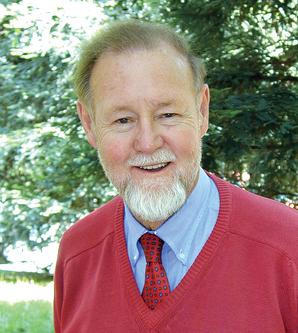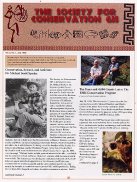
Environmental Systems Research Institute, Inc., doing business as Esri, is an American multinational geographic information system (GIS) software company headquartered in Redlands, California. It is best known for its ArcGIS products. With a 40% market share, Esri is the world's leading supplier of GIS software, web GIS and geodatabase management applications.

Waldo Rudolph Tobler was an American-Swiss geographer and cartographer. Tobler is regarded as one of the most influential geographers and cartographers of the late 20th century and early 21st century. Tobler is most well known for his proposed idea that "Everything is related to everything else, but near things are more related than distant things," which has come to be referred to as the "first law of geography." He proposed a second law as well: "The phenomenon external to an area of interest affects what goes on inside."
A GIS software program is a computer program to support the use of a geographic information system, providing the ability to create, store, manage, query, analyze, and visualize geographic data, that is, data representing phenomena for which location is important. The GIS software industry encompasses a broad range of commercial and open-source products that provide some or all of these capabilities within various information technology architectures.

Jack Dangermond is an American billionaire businessman and environmental scientist, who in 1969 co-founded, with Laura Dangermond, the Environmental Systems Research Institute (Esri), a privately held geographic information systems (GIS) software company. As of July 2023, his net worth was estimated at US$9.3 billion.
ArcSDE is a server-software sub-system that aims to enable the usage of Relational Database Management Systems for spatial data. The spatial data may then be used as part of a geodatabase.

ArcGIS is a family of client, server and online geographic information system (GIS) software developed and maintained by Esri.

Roger Frank Tomlinson was an English-Canadian geographer and the primary originator of modern geographic information systems (GIS), and has been acknowledged as the "father of GIS."

The Society for Conservation Geographic Information Systems (SCGIS) is an international non-profit society with around 1000 members in 80 countries.

The Abraham Lincoln Bicentennial Commission (ALBC) was the congressionally created, 14-member federal commission focused on planning and commemorating the 200th birthday of the United States' 16th president on February 12, 2009. The commission served for ten years, from 2000 to 2010. Its official successor organization, announced in 2011 with an expanded board and broadened mission, is the Abraham Lincoln Bicentennial Foundation.
Smart Data Compression is a compressed GIS dataset format developed by ESRI. It stores all types of feature data and attribute information together as a core data structure. The SDC format is used in ESRI products such as ArcGIS StreetMap, ArcIMS Route Server, RouteMAP IMS, ArcGIS Business Analyst, and the ArcMobile SDK.
TOXMAP was a geographic information system (GIS) from the United States National Library of Medicine (NLM) that was deprecated on December 16, 2019. The application used maps of the United States to help users explore data from the United States Environmental Protection Agency's (EPA) Toxics Release Inventory (TRI) and Superfund programs with visual projections and maps.

Ahmed Abukhater is an architect, environmental scientist, and an urban and regional planner by trade. He is an author, powerlifter, and the first athlete to represent Palestine at the World Association of Bench Pressers and Dead lifters (WABDL) World Powerlifting Championships in Las Vegas, Nevada, in 2006.
Charles Dana Tomlin is an author, professor, and originator of Map Algebra, a vocabulary and conceptual framework for classifying ways to combine map data to produce new maps. Tomlin's teaching and research focus on the development and application of geographic information systems (GIS). He is currently a professor at the University of Pennsylvania School of Design and an adjunct professor at the Yale School of Forestry and Environmental Studies, having also taught at the Harvard Graduate School of Design and the Ohio State University School of Natural Resources. His coursework in Landscape Architecture has extensively included GIS and cartographic modeling applications.
Geodesign is a set of concepts and methods used to involve all stakeholders and various professions in collaboratively designing and realizing the optimal solution for spatial challenges in the built and natural environments, utilizing all available techniques and data in an integrated process. Originally, geodesign was mainly applied during the design and planning phase. "Geodesign is a design and planning method which tightly couples the creation of design proposals with impact simulations informed by geographic contexts." Now, it is also used during realization and maintenance phases and to facilitate re-use of for example buildings or industrial areas. Geodesign includes project conceptualization, analysis, design specification, stakeholder participation and collaboration, design creation, simulation, and evaluation.

ArcGIS CityEngine is a commercial three-dimensional (3D) modeling program developed by Esri R&D Center Zurich and specialises in the generation of 3D urban environments. Using a procedural modeling approach, it supports the creation of detailed large-scale 3D city models. CityEngine works with architectural object placement and arrangement in the same manner that software like VUE manages terrain, ecosystems and atmosphere mapping. Unlike the traditional 3D modeling methodology which uses Computer-Aided Design (CAD) tools and techniques, CityEngine takes a different approach to shape generation via a rule-based system. It can also use Geographic Information System (GIS) datasets due to its integration with the wider Esri/ArcGIS platform. Due to this unique feature set, CityEngine has been used in academic research and built environment professions, e.g., urban planning, architecture, visualization, game development, entertainment, archeology, military and cultural heritage. CityEngine can be used within Building Information Model (BIM) workflows as well as visualizing the data of buildings in a larger urban context, enhancing its working scenario toward real construction projects.
Launched in 2000, Esri's Education User Conference (EdUC), is organized and hosted by Esri's Educational Programs Team the weekend before the annual Esri International User Conference. Held in San Diego, California, during the month of July, the mission of the EdUC is to support and promote the use of geographic information systems (GIS) in educational research, instruction, administration, and policy. Over the years, it has grown into a sizable and popular event for those involved in using and teaching GIS in the greater educational community. This includes school teachers, youth program leaders, college and university instructors, community leaders, librarians, museum professionals, and administrators of educational institutions. The conference includes user presentation sessions, hands-on training workshops, exhibits, special interest group meetings, and a plenary session including a keynote presentation.
Women Political Leaders (WPL) is a non-profit foundation that operates as a global network of female political leaders at national level, including the European Parliament, of whom there are currently around 9,000. WPL provides a platform for the exchange of ideas, experiences and best practices between female political leaders who push for positive change for the world.

Joseph Kerski is a geographer with a focus on the use of Geographic Information Systems (GIS) in education.
The Prague European Summit is a platform for a regular high-level strategic debate on the future of the European Union and other European issues. It is the only platform of this kind focused on the European Union in Central and Eastern Europe. It offers space for an informal dialogue among political representatives, high-ranking state officials, representatives of interest groups, businessmen, academicians and journalists.
Lynne A. Isbell is an American ethologist and primatologist, professor of anthropology at the University of California, Davis.









